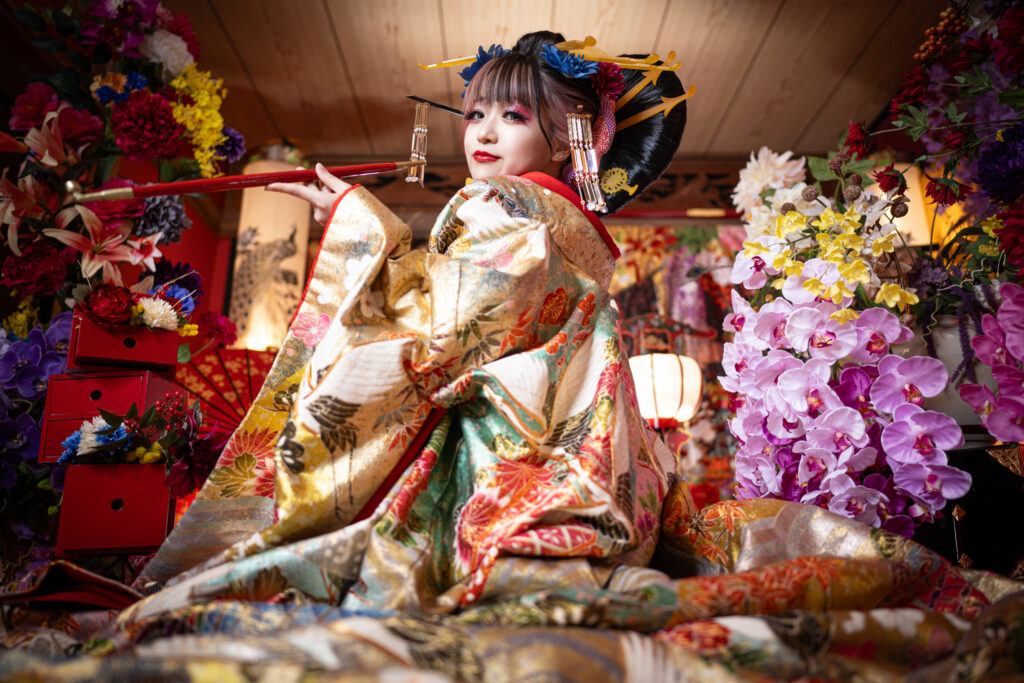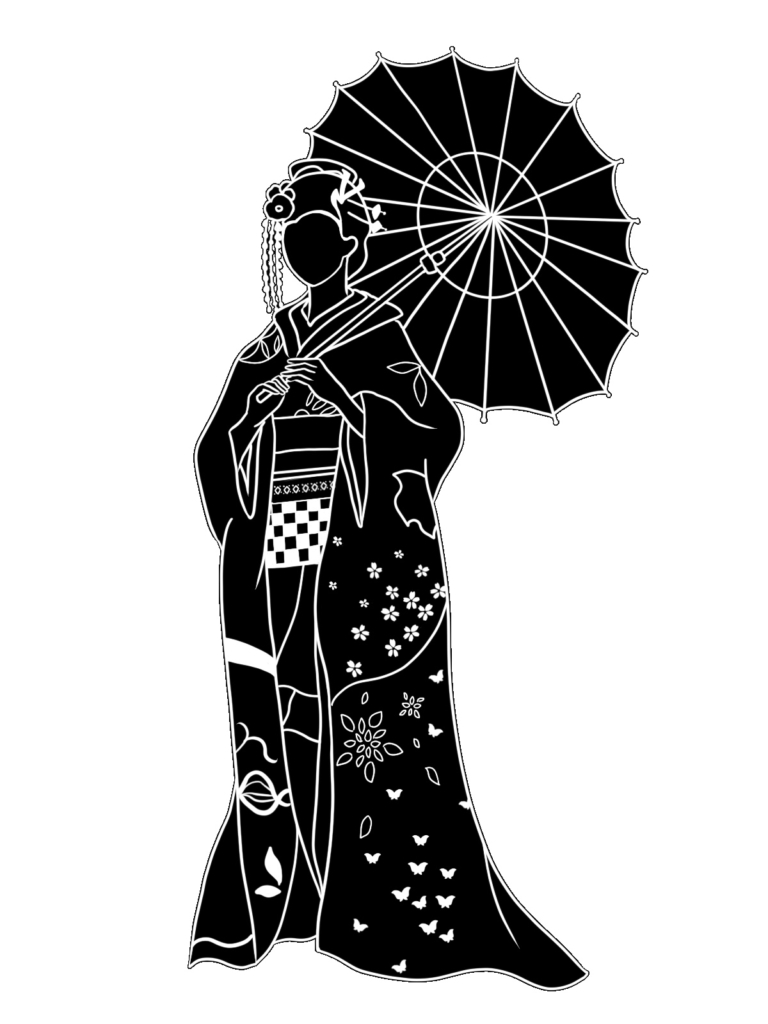What Is an Oiran? Discover the Origins and Cultural Role of Japan’s Edo-Era Courtesans
2025.6.3

Capture Your Beauty in Stunning Oiran Style at Studio Yairo
If you’ve ever dreamed of experiencing the elegance of a traditional Oiran and preserving it in a timeless photo, Studio Yairo is the place for you.
Located in Chiba City, Studio Yairo specializes in authentic Oiran-style photography with careful preparation and professional shooting to bring out your unique charm. Our experienced and friendly staff will guide you every step of the way, so even first-time visitors can feel completely at ease.
You can explore the mood and quality of our photo sessions on our official Instagram. Feel free to take a look!
The studio is just a 1-minute walk from the nearest station, with convenient access. There’s also a nearby coin parking lot, so you’re welcome to come by car as well.
For questions or reservations, feel free to contact us via email. We look forward to welcoming you soon!
How Did the Oiran Begin?
The “Oiran” were more than just high-ranking courtesans of the Edo period—they were icons of beauty, culture, and refinement in Japanese society. Their origins, however, are deeply tied to political, economic, and urban developments of their time. In this article, we focus on how the Oiran emerged, exploring the historical background, governmental systems, and cultural factors that gave rise to this unique class of women.
The Edo Shogunate and Urban Control Policies
The rise of the Oiran is closely linked to the establishment of the Edo Shogunate. In 1603, Tokugawa Ieyasu founded the government that would bring about more than 260 years of peace. As the population in cities surged, the Shogunate sought to maintain public order and morals by implementing zoning policies that concentrated certain occupations, including entertainment, into designated areas. These became the officially sanctioned red-light districts known as "Yūkaku."
The Birth of the Pleasure Quarters and Yoshiwara
The most famous of these districts in Edo was Yoshiwara. In 1617, the Shogunate ordered the relocation of scattered brothels into one area north of Nihonbashi, forming the original Yoshiwara. After being destroyed in the Great Fire of 1657, it was moved to a new location near Asakusa and became known as Shin-Yoshiwara. There, under strict regulation, women trained in various arts while living in a rigid hierarchical society.
The Rise of Oiran within the Class System
Within Yoshiwara, courtesans were divided into strict ranks. Starting as servants called "hashitame," they advanced through levels like "shinzō" and "kōshi" to eventually become the elite "tayū" or "oiran." The term “Oiran” began to appear in the late Edo period and was reserved for the most exceptional women—those with beauty, intellect, cultural refinement, and perfect etiquette. The word likely derives from "oiran-dokoro," meaning "leader among flowers," reflecting their status as trendsetters and cultural leaders.
From Courtesan to Cultural Icon
Originally, courtesans were simply entertainers who offered company for food and shelter. But as the Yūkaku system developed, courtesans began mastering arts such as poetry, calligraphy, tea ceremony, and incense appreciation. The Oiran, especially, were regarded as “comprehensive artists.” The “call system,” where clients could meet an Oiran only after passing through strict protocols and offering elaborate gifts, helped elevate their mystique and social standing.
Symbolic Dress and the Oiran Procession
One of the Oiran's most iconic features was the front-tied obi belt. Unlike typical women who tied their obi in the back, Oiran wore them in front for both symbolic and practical reasons. They also walked in public wearing tall wooden clogs (koma-geta), accompanied by attendants called "kamuro." The spectacle of the “Oiran Dōchū” (parade) showcased their grandeur and served as a public performance that established them as cultural figures rather than mere entertainers.
The Shogunate’s Intentions and the Value of Oiran
The government’s endorsement of the pleasure quarters was not just about controlling public morals. It also aimed to offer a release valve for society, stimulate economic activity, and secure tax revenues. The Oiran, with their exclusive status, served to legitimize the system. Meeting an Oiran required immense time and wealth, making it a mark of prestige and elite social standing.
Oiran in Ukiyo-e and Their Societal Influence
Oiran became popular subjects in Ukiyo-e woodblock prints. Artists like Kitagawa Utamaro and Suzuki Harunobu captured their elegance in “bijin-ga” (pictures of beautiful women), which circulated across Japan. Through these artworks, Oiran became fashion icons, influencing hairstyles, kimono patterns, and even attitudes among common women. Their social and aesthetic influence was widespread and profound.
Training and Personal Development of Future Oiran
Becoming an Oiran required years of dedicated training. Girls often entered the Yūkaku as children and began as “kamuro,” serving senior courtesans. They then advanced to become shinzō and kōshi, learning etiquette, handwriting, songs, dance, and incense arts. It could take a decade or more to reach the rank of Oiran, by which time they were admired not only for their beauty but for their refined character and skills.
The Popularization of the Term "Oiran"
The word "Oiran" became commonly used in the mid-Edo period. Originally a title for only the highest-ranking courtesans, its popularity grew with the fame of Yoshiwara. Oiran characters began to appear in kabuki, storytelling, and literature. The public came to view them as aspirational figures, symbols of elegance, and embodiments of ideals that transcended the pleasure quarters.
The Decline and Legacy of the Oiran
In the Meiji period, with the rise of Westernization, the Yūkaku system began to decline. Reforms separated geisha and courtesans, and by 1958, the Prostitution Prevention Law formally abolished the licensed brothel system. However, the Oiran’s legacy lived on—in fashion, stage arts, and visual culture. Their aesthetic and cultural imprint continues to influence Japan’s traditional arts today.
Modern Reinterpretation of the Oiran
Today, Oiran are viewed as cultural icons rather than historical figures. Many studios and tourist attractions offer “Oiran experiences,” allowing people to wear elaborate kimono, wigs, and makeup reminiscent of the Edo period. These services are especially popular among foreign visitors and help promote awareness of traditional Japanese beauty and heritage.
Oiran also appear in modern media—films, anime, and theater—where their complex roles and stunning visuals continue to captivate audiences. What began as a regulated position in Edo society has evolved into a timeless symbol of elegance and artistry.
The Meaning and Sound of “Oiran”
The word “Oiran” carries a sense of grace and dignity. Literally translating to “leader among flowers,” it evokes images of blooming beauty and refined presence. Even today, the word itself continues to represent the spirit of Japanese femininity and traditional aesthetics.
The name “Oiran” still holds the essence of Japanese beauty and cultural pride.

Capture Your Beauty in Stunning Oiran Style at Studio Yairo
If you’ve ever dreamed of experiencing the elegance of a traditional Oiran and preserving it in a timeless photo, Studio Yairo is the place for you.
Located in Chiba City, Studio Yairo specializes in authentic Oiran-style photography with careful preparation and professional shooting to bring out your unique charm. Our experienced and friendly staff will guide you every step of the way, so even first-time visitors can feel completely at ease.
You can explore the mood and quality of our photo sessions on our official Instagram. Feel free to take a look!
The studio is just a 1-minute walk from the nearest station, with convenient access. There’s also a nearby coin parking lot, so you’re welcome to come by car as well.
For questions or reservations, feel free to contact us via email. We look forward to welcoming you soon!
